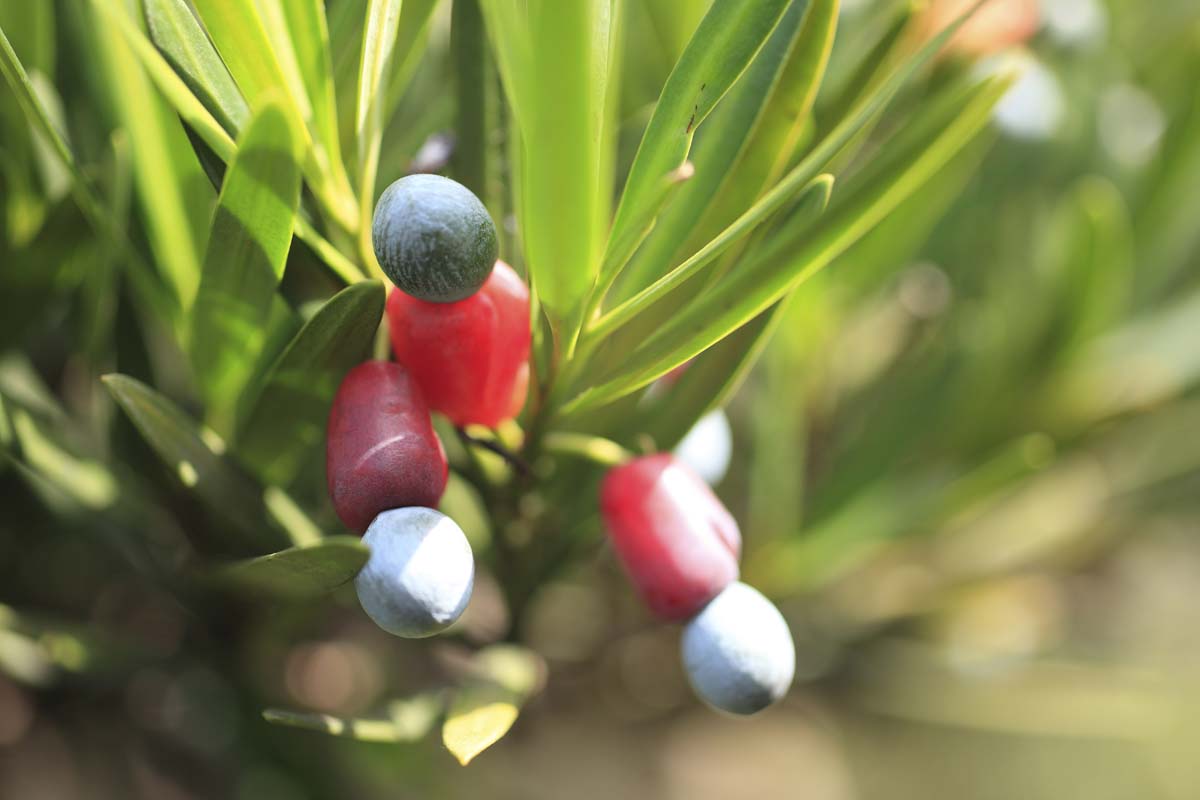Description
Podocarpus – Plum Pine –
There are about 100 moderately fast growing, dioecious, occasionally monoecious, evergreen, coniferous trees to 150′ feet tall and shrub to 3′ feet more tall. They occur in forest habitats, mainly in warm temperate to tropical zones. They are grown for their spirally arranged leaves, which are variable in shape and are mainly borne in 2 ranks. Male and female flowers are usually borne on separate trees: the males are yellow or red, solitary or in axillary clusters of up to 5, or in some species, borne in narrow, catkin like cones, the females are green and produced in cone like structures. Both male and female plant are needed to produce the plum shaped, rounded to oblong, usually single seeded fruits, with fleshy, often red arils at the bases. Grow as specimens or in woodland garden, P. alpinus and P. nivalis are also suitable for a shrub border or large rock garde, P. macrophyllus need long, hot, humid summers to achieve tree stature, remaining shrub like in cooler areas. They make attractive specimens in warm climates. In cooler areas, plum pines can be grown successfully indoors.
Tolerant of a range of soil, best in fertile, moist but well drained, humus rich soil in full sun, with shelter from cold, dry winds. Most grow best in humid or high rainfall climates.
P. macrophyllus – Buddhist Pine – Kusamaki – Southern Yew – This conical tree, becoming domed from the Mountains of Eastern China and Japan grows 50-70′ feet tall and 20-25′ feet wide. It has reddish brown bark and erect to spreading, yellowish green shoots. It produces lance to linear shaped, firm, leathery leaves, 2 ½-6″ long, are light green becoming dark green above, each with 2 bluish green bands beneath, and are erect or spreading on the shoots. Male flowers are borne in yellow, catkin like cones, females flowers in green cone like structures. In autumn on female plant it bears ovoid, reddish purple fruit, about ½” long. Good as a hedge.
Zones 7-10





